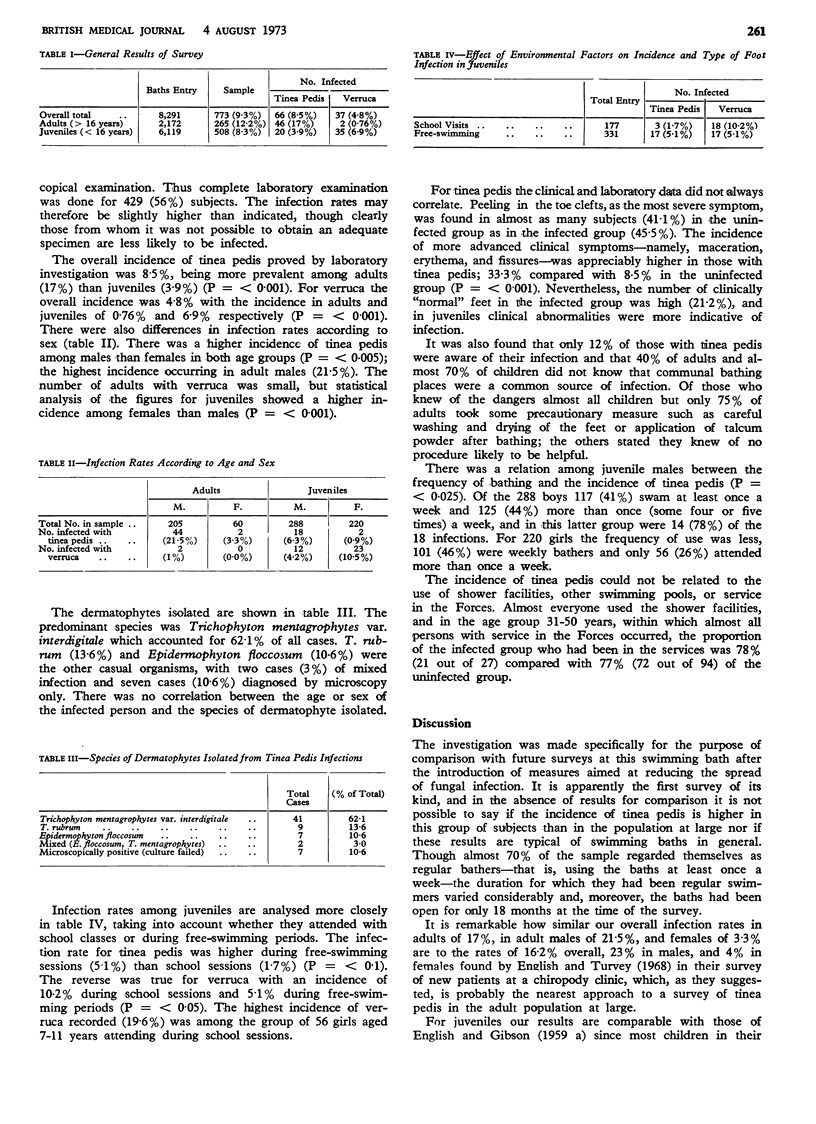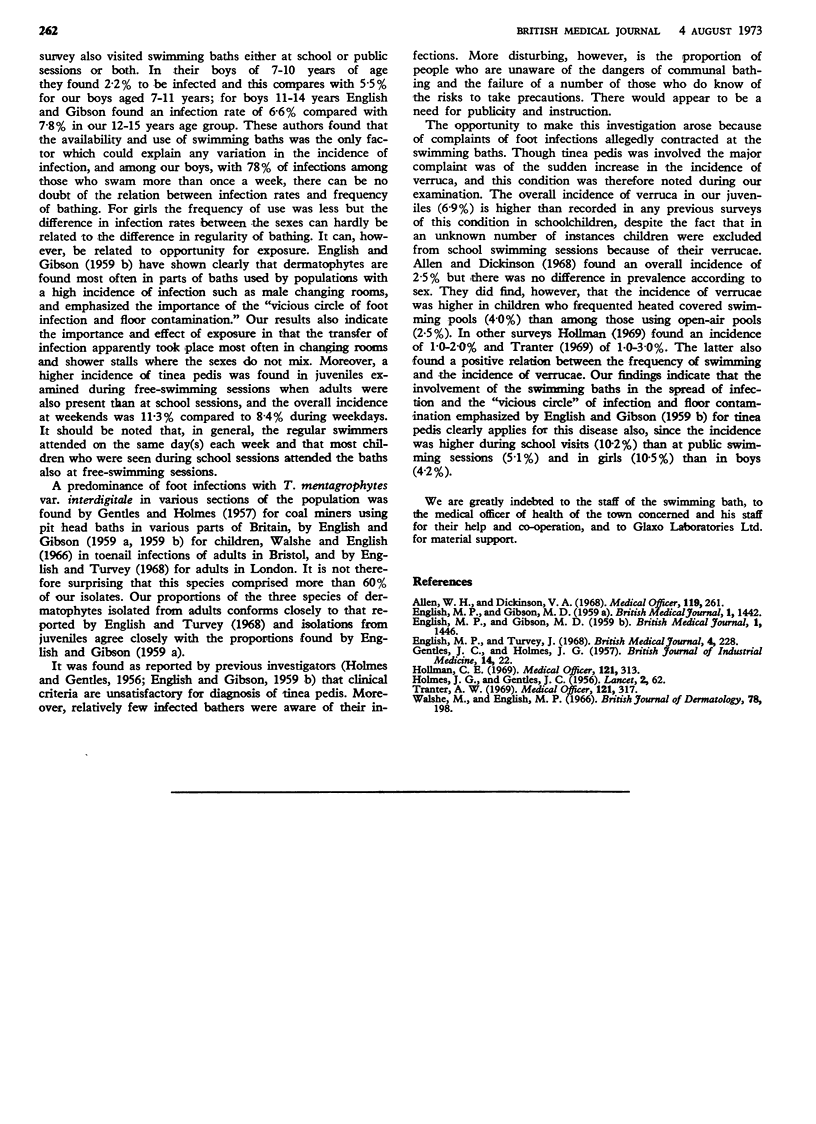Abstract
A 10% random sample of all bathers at a public swimming bath were examined for tinea pedis and verruca.
The overall incidence of tinea pedis was 8·5% and of verruca 4·8%. The incidence of tinea pedis in 205 male adults was 21·5%, in 288 boys 6·3%, in 60 adult females 3·3%, and in 220 girls 0·9%. The incidence of verruca in juveniles ranged from 4·2% in boys to 10·5% in girls.
It was clear that both infections spread within the baths, and since a relatively small proportion of users admitted to taking precautions to avoid contracting or developing infections it seems advisable that more publicity about recommendations on foot care should be provided.
Full text
PDF


Selected References
These references are in PubMed. This may not be the complete list of references from this article.
- ENGLISH M. P., GIBSON M. D. Studies in the epidemiology of tinea pedis. I. Tinea pedis in school children. Br Med J. 1959 Jun 6;1(5135):1442–1446. doi: 10.1136/bmj.1.5135.1442. [DOI] [PMC free article] [PubMed] [Google Scholar]
- English M. P., Turvey J. Studies in the epidemiology of tinea pedis. IX. Tinea pedis and erythrasma in new patients at a chiropody clinic. Br Med J. 1968 Oct 26;4(5625):228–230. doi: 10.1136/bmj.4.5625.228. [DOI] [PMC free article] [PubMed] [Google Scholar]
- GENTLES J. C., HOLMES J. G. Foot ringworm in coal-miners. Br J Ind Med. 1957 Jan;14(1):22–29. doi: 10.1136/oem.14.1.22. [DOI] [PMC free article] [PubMed] [Google Scholar]
- HOLMES J. G., GENTLES J. C. Diagnosis of foot ringworm. Lancet. 1956 Jul 14;271(6933):62–63. doi: 10.1016/s0140-6736(56)90425-1. [DOI] [PubMed] [Google Scholar]
- Walshe M. M., English M. P. Fungi in nails. Br J Dermatol. 1966 Apr;78(4):198–207. doi: 10.1111/j.1365-2133.1966.tb12205.x. [DOI] [PubMed] [Google Scholar]


